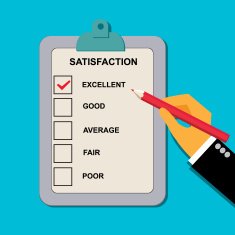How to Measure Job Satisfaction and Foster Happy Employees
By Maria Forbes
December 10, 2020
How satisfied are your employees? Research shows that less than half of all U.S. employees are unsatisfied with their jobs. They may show up to work, “go through the motions” without developing a sense of enjoyment or fulfillment. You can foster happy employees. First you must measure job satisfaction.
What Is Job Satisfaction?
Job satisfaction is defined as the level of contentment an employee experiences in his/her role. In the most basic sense, it’s a metric for how much an employee likes or dislikes a role and whether they feel engaged. Job satisfaction can be assessed through examination of three parts of the mind; cognitive, affective, and conative. When an employee has a high level of job satisfaction, he or she is enjoying the application of their strengths, the blend of all three parts of the mind that enables their full engagement and best performance. A low level of job satisfaction typically means the employee is missing one or more of these critical measures and may be working against their natural strengths instead of applying them.
Leaders and managers can identify levels of job satisfaction by including the full scope of engagement in performance reviews. Employees who are not fully engaged often dislike their jobs, display performance strain in one or more essential values; cognitive (knowledge and skills), affective (experiential or cultural), or conative (natural method of execution). We suggest one or more of the critical measures can be missing because employees can experience a high level of job satisfaction in one area and still perform poorly.
Factors typically viewed as measures of job satisfaction:
- Company culture
- Work environment
- Relationship with peers
- Relationship with manager(s)
- Work-life balance
- Level of flexibility
- Recognition
- Salary or wages
- Benefits
Measuring job satisfaction is important to business growth and continuity. The connection between job satisfaction and business performance is significant, such as cost containment from reduced turnover, specialized training, reliable performance, revenue growth and improved profitability.
Measuring job satisfaction also allows you to identify problems within your workforce that may otherwise go unnoticed. The reasons are many and they fall into one of three parts of the mind. Your feedback may include expressions like these; they aren’t receiving recognition for their hard work, or perhaps they are being forced into long hours with little or no flexibility, or they feel ill equipped to meet expectations or manage change. Job satisfaction metrics are essential to your business growth and sustainability; the upkeep of employee satisfaction is your business immunity against external challenges to growth.
Add These To The List: Three Essential Metrics of Job Satisfaction
- Alignment of conative or natural method of execution with role expectations
- Leverage of cognitive or learned knowledge base and skills to role requirements
- Level of affective influence or collaborative strengths and positive cultural influence

Add a Suggestion Box
You can use a suggestion box to get continual feedback on job satisfaction. Some employers assume that suggestion boxes are only useful for collecting feedback from customers, but a suggestion box is equally useful for collecting feedback from employees.
Employees can prefer to give feedback anonymously for fear of repercussions. With a suggestion box, they can leave feedback anonymously without revealing their identities. You can encourage employees to fill out a card and leave it in the suggestion box. You can then collect their responses to gauge overall job satisfaction.
Send Satisfaction Surveys
Many larger companies use satisfaction surveys to measure job satisfaction but they can also be useful to small business leaders. A satisfaction survey is a questionnaire that asks employees to rate their level of satisfaction in various areas of the workplace and role experience. Surveys can be tangible such as a printed survey, as well as digital forms such as a Word document or an email. Satisfaction surveys are designed to gain insight into levels of satisfaction across your company.
Keep satisfaction surveys reasonable, they should not be long or complex, rather specific to what you want to learn. Specific survey questions produce more useful information. You can create a satisfaction survey asking employees to rate their level of satisfaction on a scale from one to 10 on specific aspects of your company. This a quick and effective strategy that provides accurate insight into job satisfaction.
Make Job Satisfaction An Ongoing Experience
Live conversations are happening on a regular basis and provide opportunities for informal satisfaction checks. Informal satisfaction checks can occur when you come across an employee during the workday, on Zoom or other remote platforms. Delay the agenda for a minute and ask about his or her workday. You can ask if he or she has experienced any problems recently, and to provide a brief description. Regular conversations with your employees are a more personal way to stay informed about job satisfaction. No matter the system for obtaining ongoing job satisfaction, consider it a strategic imperative for harnessing the value of your biggest asset and your best competitive advantage, your people.





